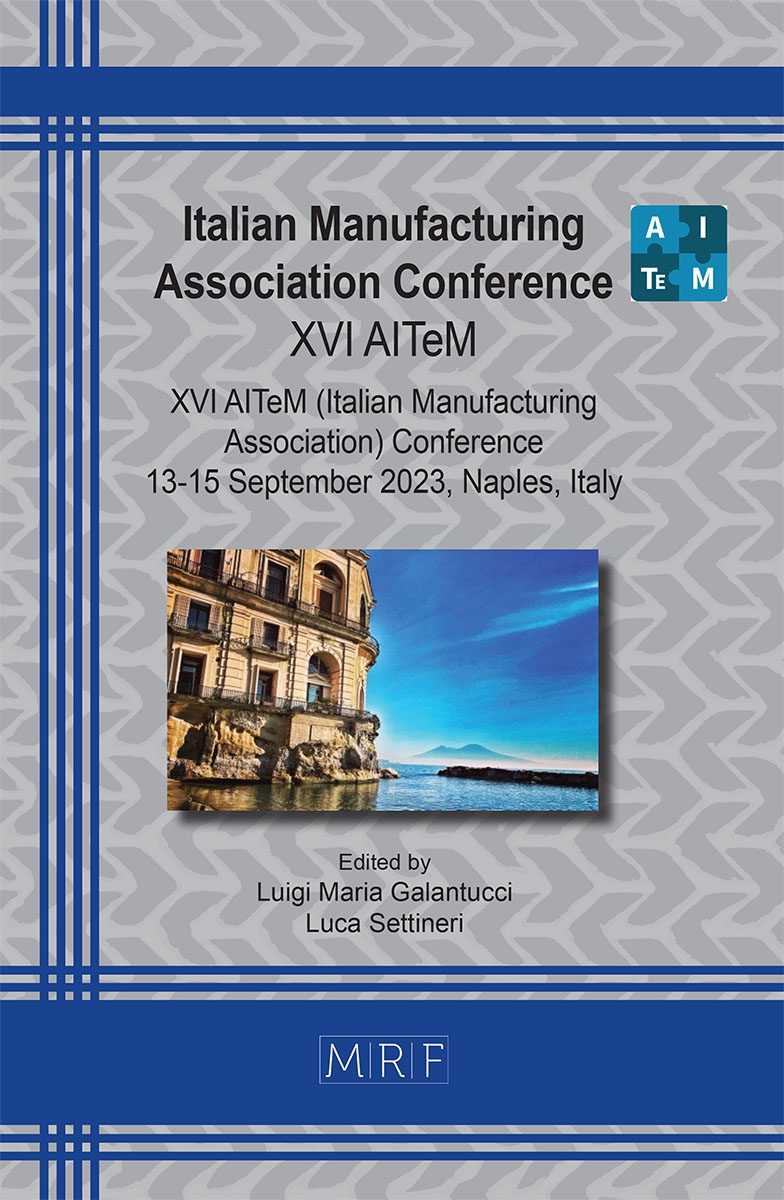Tool path strategies for a new Agile incremental bending system
Enrico Simonetto, Andrea Ghiotti, Enrico Savio, Stefania Bruschi
This Article has been withdrawn by the authors
Abstract. In the last years, driven by the advent of industry 4.0 and more recently by the Covid19 pandemic, the paradigm of Agile manufacturing has become an important issue. To address these needs, manufacturing companies are looking for new processes to reduce production rap-ups times and costs related to traditional bending and stamping technologies. This paper proposes a new system, to produce bent elongated profiles of different thickness and shape by incremental forming. The novel machine uses two opposite rollers, to locally deform a workpiece by repeatedly moving back and forth along the profile to be bent. However, to fully exploit the new system potentialities ensuring the quality of the final products, the correct design of the tools paths are of utmost importance. An analysis of different tool path strategies to bend profiles up to 90° is presented. Finally, the proposed paths were validated on AISI304 sheets of 1 and 3 mm thickness.
Keywords
Sheet Forming, Incremental Sheet Forming, Tool Path
Published online 9/5/2023, 7 pages
Copyright © 2023 by the author(s)
Published under license by Materials Research Forum LLC., Millersville PA, USA
Citation: Enrico Simonetto, Andrea Ghiotti, Enrico Savio, Stefania Bruschi, Tool path strategies for a new Agile incremental bending system, Materials Research Proceedings, Vol. 35, pp 437-443, 2023
DOI: https://doi.org/10.21741/9781644902714-52
The article was published as article 52 of the book Italian Manufacturing Association Conference
![]() Content from this work may be used under the terms of the Creative Commons Attribution 3.0 license. Any further distribution of this work must maintain attribution to the author(s) and the title of the work, journal citation and DOI.
Content from this work may be used under the terms of the Creative Commons Attribution 3.0 license. Any further distribution of this work must maintain attribution to the author(s) and the title of the work, journal citation and DOI.
References
[1] G. Ambrogio, L. Filice, F. Gagliardi. Formability of lightweight alloys by hot incremental sheet forming. Materials and Design (2012) 34, 501-508. https://doi.org/10.1016/j.matdes.2011.08.024
[2] X. Dang, K. He, F. Zhang, Q. Zuo, R. Du. Multi-stage incremental bending to form doubly curbed plates based on bending limit diagram. International Journal of Mechanical Sciences 155 (2019) 19-30. https://doi.org/10.1016/j.ijmecsci.2019.02.001
[3] G. Ambrogio, L. De Napoli, L. Filice, F. Gagliardi, M. Mazzupappa. Application of incremental forming process for high customized medical product manufacturing. Journal of Material Processing Technology 162-163 (2005) 156-162. https://doi.org/10.1016/j.jmatprotec.2005.02.148
[4] A. Attanasio, E. Ceretti, C. Giardini, L. Mazzoni. Asymmetric two points incremental forming: Improving surface quality and geometric accuracy by tool path optimization. Journal of material process technology 197 (2008) 59-67. https://doi.org/10.1016/j.jmatprotec.2007.05.053
[5] J. Jeswiet, F. Micari, G. Hirt, A. Bramley, J. Duflou, J. Allwood. Asymmetric single point incremental forming of sheet metal. CIRP Annals Volume 54, Issue 2 (2005) 88-114. https://doi.org/10.1016/S0007-8506(07)60021-3
[6] D. Patel, A. Gandhi, A. A review article on process parameters affecting Incremental Sheet Forming (ISF). Materials Today: Proceedings (2022). https://doi.org/10.1016/j.matpr.2022.03.208
[7] K. Jackson, J. Allwood. The mechanics of incremental sheet forming. Journal of materials processing technology (2009) 209 1158-1174. https://doi.org/10.1016/j.jmatprotec.2008.03.025
[8] O. Music, J. Allwood, J., K. Kawai. A review of the mechanics of metal spinning. Journal of materials processing technology (2010) 210, 3-23. https://doi.org/10.1016/j.jmatprotec.2009.08.021
[9] I.M. Russo, J.C. Christopher, J. Allwood. Seven principles of toolpath design in conventional metal spinning. Journal of Materials Processing Technology (2021) 117131. https://doi.org/10.1016/j.jmatprotec.2021.117131
[10] H. Voswinckel, M. Bambach, G. Hirt. Process limits of stretch and shrink flanging by incremental sheet metal forming. Key engineering materials vol. 549 (2013) 45-52. https://doi.org/10.4028/www.scientific.net/KEM.549.45
[11] H. Voswinckel, M. Bambach, G. Hirt. Improving geometrical accuracy for flanging by incremental sheet metal forming. Int J Mater form (2015) 8 391-399. https://doi.org/10.1007/s12289-014-1182-y
[12] T. Buranathiti, J. Cao, W. Chen, L. Baghdasaryan, Z. Cedric Xia. Approaches for Model Validation: Methodology and Illustration on a Sheet Metal Flanging Process. J. Manuf. Sci. Eng. (2006) 128(2) 588-597. https://doi.org/10.1115/1.1807852
[13] N. Le Maoût, S. Thuillier, P.Y. Manach. Classical and Roll-hemming Processes of Pre-strained Metallic Sheets. Experimental Mechanics (2010) 50 1087-1097. https://doi.org/10.1007/s11340-009-9297-7
[14] J.Q. Wang, Y.W. Huang, G.R. Zhou, Z.L Niu, Z.W. Cheng. Process Parameters Study on Robot Rope Hemming of the Hood. Applied Mechanics and Materials (2014) 950-953. https://doi.org/10.4028/www.scientific.net/AMM.602-605.950
[15] X. Hu, Y.X. Zhao, S.H. Li, C. Liu. Numerical Simulation of Dimensional Variations for Roller Hemming. Advanced Materials Research (2010),160-162 1601-1605. https://doi.org/10.4028/www.scientific.net/AMR.160-162.1601
[16] E. Simonetto, A. Ghiotti, S. Bruschi, S. Filippi. Flexible Incremental Roller Flanging process for metal sheets profiles. Procedia CIRP (2021) 103 219-224. https://doi.org/10.1016/j.procir.2021.10.035












